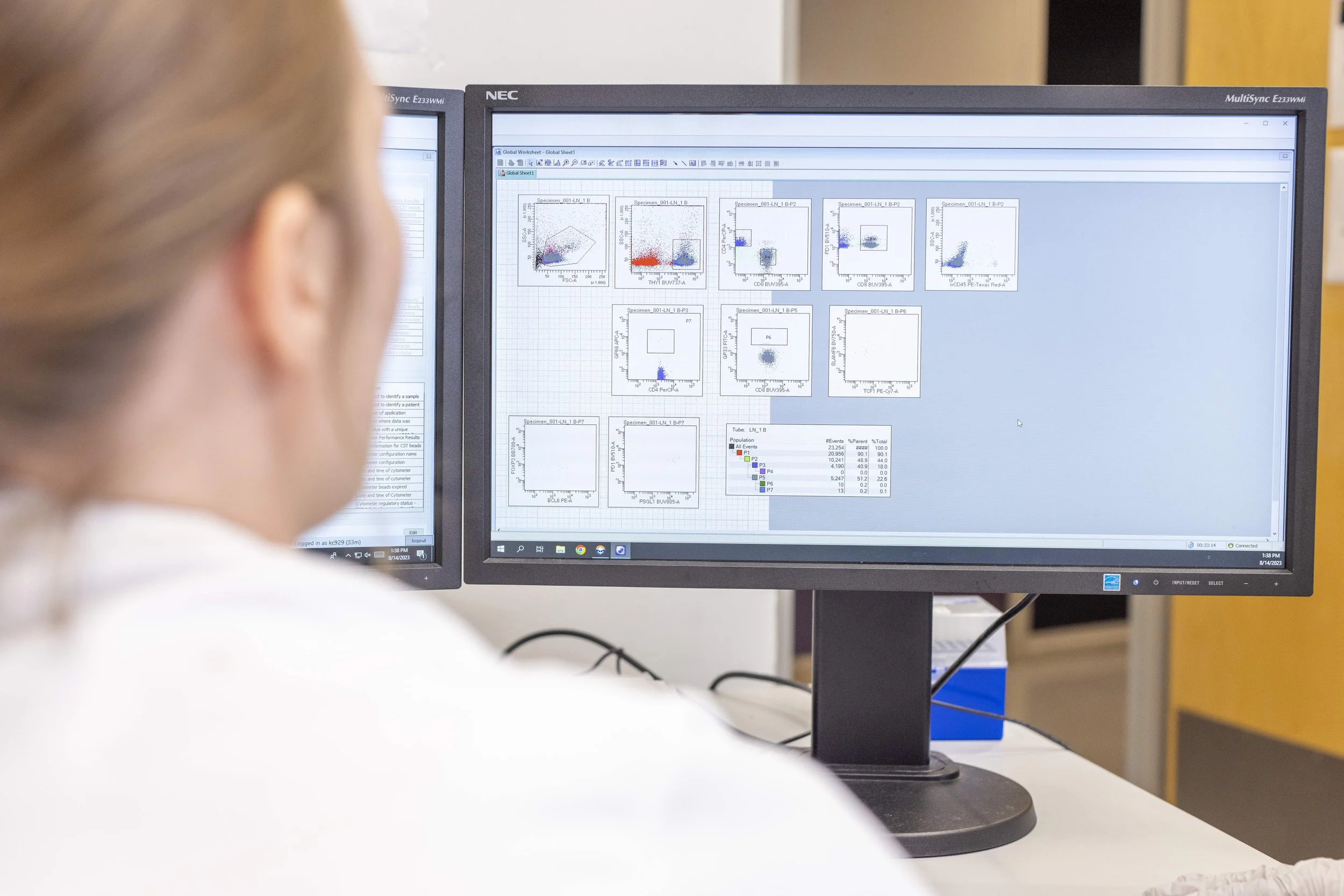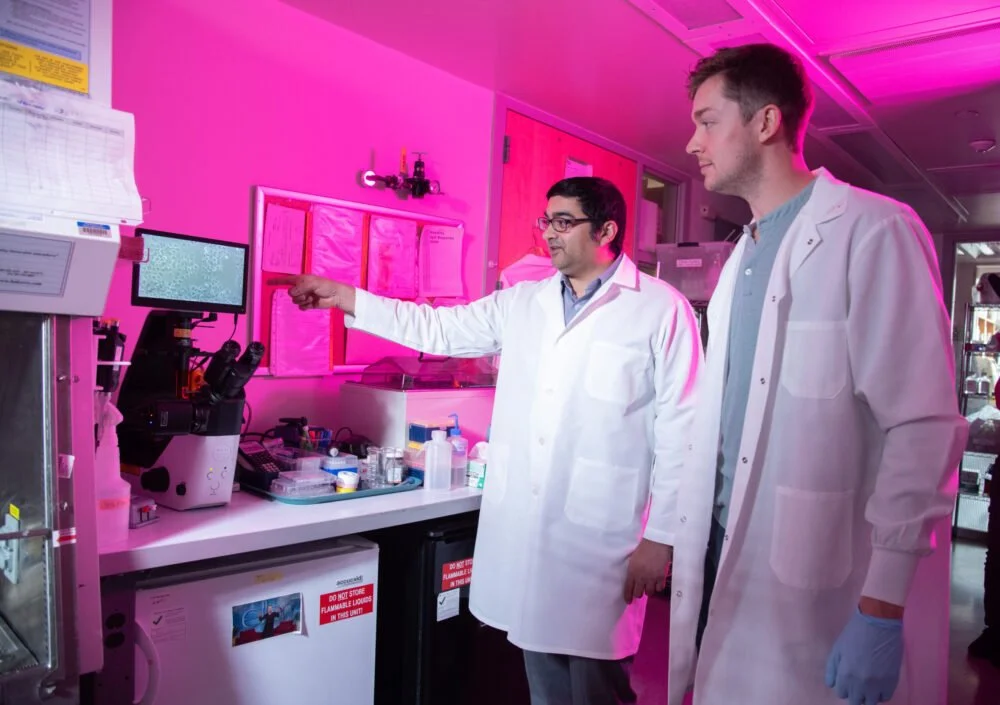Team Time
Investigating T cell differentiation in models of cancer and infection
FACS based profiling of T cells in tumor models
THE ROLE OF TUMOR DRAINING LYMPH NODES IN CANCER
Tumor-specific CD8 T cells are amongst the cell types that respond to checkpoint immunotherapy and mediate tumor destruction in many cancer types, including lung cancer. We and others have found that T cells in tumors are terminally exhausted, and moreover that the environment of the tumor is one that promotes exhaustion. However, this raised a question of how tumor-specific CD8 T cell populations are maintained during the months-years when tumors are developing.
Using engineered models, we have shown that the tumor draining-lymph node plays a critical role in the maintenance of a stem-like T cell (TSL) population over the course of tumor development, and that periodic migration of these TSL to the tumor is what maintains the pool of less differentiated T cells in the tumor (Connolly 2021). We have also shown that interactions between B cells and CD4 T follicular helper (TFH) cells in tumor draining-lymph nodes are critical for the induction of IL-21 production by TFH cells, which then promotes CD8 T cell cytolytic function in the tumor (Cui 2021). A similar idea has been shown by our collaborators working in chronic infection models (Zander 2022). Thus, our work highlights how the the interactions that occur within the tumor draining-lymph node can sustain CD8 T cell populations long term and direct them on a pathway towards function after migration into the tumor.
Ongoing work focuses on the interactions between the TFH cells and CD8 T cells and the role of the neoantigen in driving these interactions.
Understanding tertiary lymphoid structure development
Lung cancers are frequently associated with tertiary lymphoid structures (TLSs) in patients, and these structures correlate with good outcomes for patients. Yet, little is known about how these structures form during tumor development. Using genetically engineered mouse models, we are probing the interactions and signals that lead to TLS development and determining how TLSs impact tumor biology.
Analyzing T cells sometimes requires pink lights
T cell differentiation mechanisms during infection
CD8 T cells differentiate into many downstream fates, but how these fates are established remains an active area of research. We are focusing on two aspects of the biology, the role of transcription factors in T cells and the role of the T cell receptor in dictating T cell fate. We study this biology using infection with lymphocytic choriomeningitis virus and with heterologous infections such as listeria and influenza that express the GP33 antigen from LCMV. This project follows up on work that began with Nik’s thesis. Read more here.

